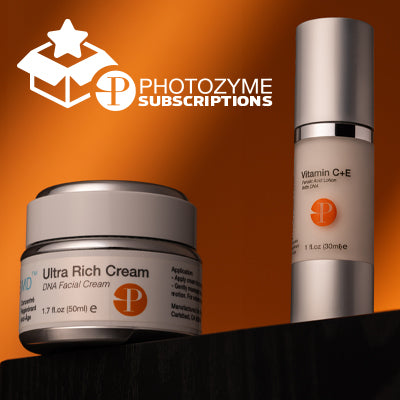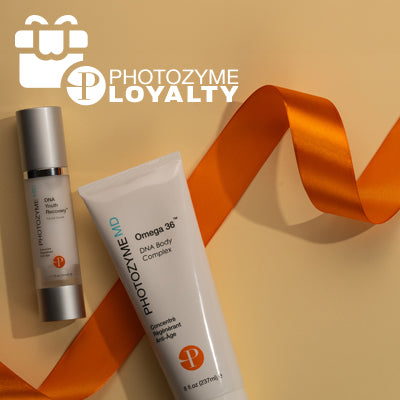
BLUE LIGHT, PIGMENT DARKENING AND DNA DAMAGE
Daniel B. Yarosh, PhD
December 2020
MEDICAL CONCERNS OF BL
Blue light (BL) is the part of the visible light spectrum in the range of 400 – 450 nm. It is a prominent component of light emitted by electronic screens, such as computer and phone screens, which have peak emission in the 400-490 nm region (1). Medical concerns have been raised because of the potential for damage to the eyes and disruption of circadian rhythm (2).
In skin, BL induces persistent pigment darkening (PPD) which can last for weeks (3). PPD is specific to skin with high melanin content, especially skin types III and greater (4). The effect is due to increased production of melanin and greater melanin deposition at the skin surface (5), and persists for at least 28 days (6). As a consequence BL exacerbates melasma, which is also more prevalent in darker skin types (7). It is a much less effect than UV-induced PPD; the UV component of visible light is estimated to be at least 25 times more efficient per energy unit
(J/cm2) than BL in in inducing pigmentation (8). BL has not been shown to be related to wrinkle formation (9).
FREE RADICAL AND DNA DAMAGE
BL induces free radicals or reactive oxygen species (ROS), which can damage DNA and induce pigment response. BL induced ROS in normal human keratinocytes (10) and in normal human fibroblasts (11,12). In one study, exposure of cultured fibroblasts to one hour of light from an iPhone or iPad produced measurable increase in ROS (13). At least one antioxidant has been shown to reduce ROS generated by BL in human skin fibroblasts (14).

BL-induced ROS has been shown to cause DNA damage and genotoxicity (15) and DNA repair rescued bacterial cells from inactivation by BL (16). ROS induce 8-oxo-guanine in DNA, which can lead to mutations and skin cancer (17). BL oxidizes melanin, which in a delayed reaction can induce both 8-oxo-guanine (18) and cyclobutane pyrimidine dimers (CPD) (19), and this may induce pigmentation.
An additional mechanism for BL induction of PPD has been suggested. BL activates the Opsin-3 (OPN3) receptor independent of free radicals, which leads to MITF induction and increased melanin pigmentation (20).
PREVENTION OF BL-INDUCED PPD
BL is only weakly absorbed by skin compared to UV. However, it is specifically absorbed by melanin and so skin of color is most sensitive to its effects, such as PPD. Much remains to be learned about the mechanism of BL effects in skin, but from what is now known preliminary recommendations can be formulated:
1. Reduce unnecessary computer and phone screen exposure and reduce the intensity of the screen light.
2. Use sunscreens and topical skincare products that contain antioxidants, such as ascorbic acid (vitamin C) and tocopherol (vitamin E).
3. Use topical products that contain DNA repair enzymes that reverse the effects of DNA damage, such as photolyase from Anacystis nidulans, endonuclease from Micrococcus luteus and glycosylase OGG1 from Arabidopsis thalania. The use of photolyase in conjunction with BL exposure is incidentally advantageous since BL activates photolyase to repair CPD from sun exposure.
REFERENCES
1 Arjmandi, A., et al. J. Biomed. Phys. Eng. 8:447, 2018
2 Tosini, G. et al. Mol. Vis. 22:61, 2016
3 Duteil, L. et al. Pigment Cell Melanoma Res. 27:822, 2014
4 Mahmoud, B., et al. J. Invest. Dermatol. 130:2092, 2010
5 Randhawa, M., et al. PLoS One 10:e013949, 2015
6 Campiche, R., et al. Intl. J. Cosm. Sci. 42:399, 2020
7 Boukari, F., et al. J. Am. Acad. Dermatol 72:189, 2015
8 Ramasubramanian, R., et al. Photochem. Photobiol. Sci. 10:1887, 2011
9 Sondenheimer, K. and Krutmann, J. Front. Med. 5:162, 2018
10 Becker, A. et al. Sci. Rep. 6:33847, 2016
11 Mann, T., et al. Photoderm. Photoimmunol. Photomed. 36:135, 2020
12 Mamalis, A., et al. Lasers Surg. Med. 47:210, 2015
13 Austin, E., et al. Lasers Surg Med. Doi:10.1002/lsm.22794, 2018
14 Mamalis, et al., Dermatol. Surg. 42:727, 2016
15 Wall, A., et al., Mutat. Res. 841:31, 2019
16 Djouiai, B., et al. Appl Environ. Microbiol. 84:e01604, 2018
17 Karaman-Juruskovsa, N. and Yarosh, D. in Principles and Practice of Photoprotection (eds. S. Wang and H. Lim) Springer International Publishing, Switzerland 2016
18 Pellosi, M., Arch. Biochem. Biophys. 557:55, 2014
19 Premi, S. Sci. 347:842, 2015
20 Regazzetti, C., et al. J. Invest. Dermatol. 138:171, 2018


